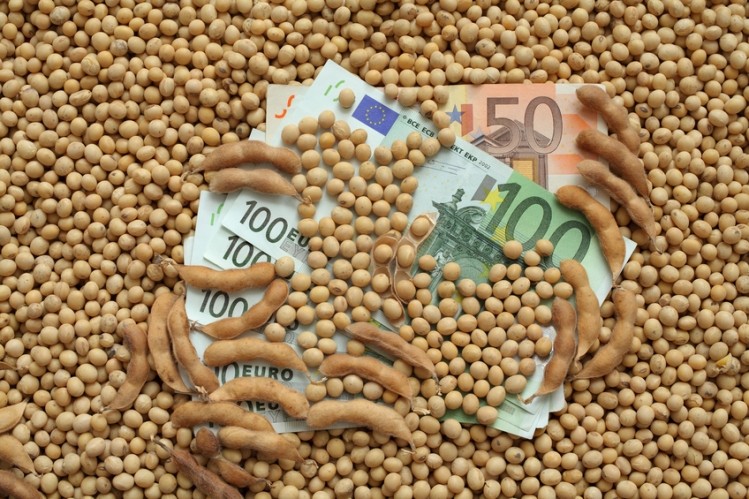ForFarmers makes some headway with soy free diets, but flags up scale restraints

The leading Dutch feed player has been exploring alternatives to soy derived protein in animal diets, given the fact the EU is heavily reliant on imported soy from the US, Argentina and Brazil.
This week it announced it had made progress in this respect, following on from the culmination of different initiatives evaluating soy substitutes conducted at both commercial farms and research institutes; it reported particular success with laying hens but greater challenges with broilers and pig diets.
And the compound feed manufacturer said segments like dairy, beef and sheep production may have an easier time of it than the pig and poultry sectors in that they could, potentially, use greater amounts of protein-rich roughage in rations and then supplement those with soy-free sources of protein.
Technically feasible
Nick Major, head of corporate affairs at ForFarmers, would not be drawn on the exact protein alternatives the company had assessed in the hunt for soy replacements but he did put the R&D work in context:
“Soy has been widely used in feed over the past few years due to its high protein content and amino acid profile but there is increasing societal pressure in relation to soy sourcing and usage.
“Can we reduce or exclude soy in diets and still get the same level of animal performance? Yes, we know now that, technically, soy free diets are feasible, but it must stressed there are downsides from using many alternative proteins to soy – they are more expensive and the environmental footprint of the production of these substitutes can be greater than soy itself," he told us.
In order for the use of soy-free diets to be expanded, a different integral approach is needed within the total feed chain, said ForFarmers, which takes into account those higher feed costs and other disadvantages such as a hike in phosphate emissions, a larger CO2 footprint and the fact that more land is required to produce potential soy replacement raw materials like rapeseed and sunflower meal, for example.
“And then there are concerns over the yields and quality of these alternatives.
"Look, while there are other multiple types of soy protein replacement options, currently none are at sufficient scale to replace the over 30 million tons of soy imported into the EU annually,” said Major.
Supply chain led hunt
He stressed that, at ForFarmers, the emphasis of any R&D work is always about ensuring EU feed manufacturing remains competitive globally and economically viable.
"So while we have been evaluating alternatives to soy, we have been doing so very much on the basis of individual customer requests – this search for such substitutes has been, fundamentally, supply chain driven and soy free feeds will, for the moment, only be used by livestock producers or retailers that understand the cost implications of doing so,” continued Major.
Therefore, it is not anticipated that soy-free feeds will be produced or used on a large scale in the short term, and so the current focus will remain on responsible sourcing of soy, he added.
“In this context, the EU Feed Manufacturers’ Federation (FEFAC) soy sourcing guidelines allow a step wise approach, while looking at continuous improvement, with the objective of ensuring a mass market for responsible soy,” said Major, who is also FEFAC chairman of the PEF pilot project on feed.









